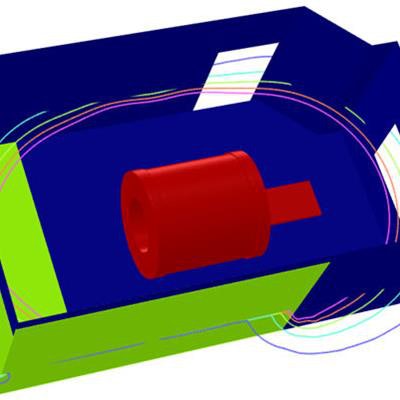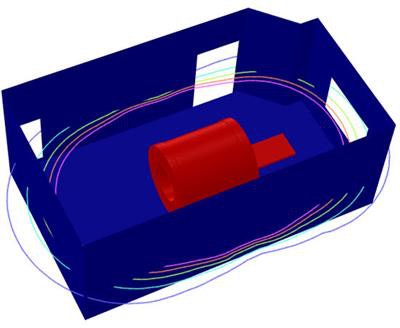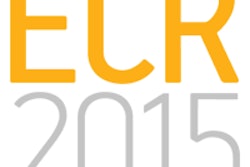
The U.S. is currently experiencing an upsurge in sales of preowned MRI equipment. While this is beneficial for the imaging industry and the cost-conscious healthcare economy, it brings with it a number of challenges, namely how to safely install an MRI machine.
Most imaging equipment providers understand and are well aware of the radiofrequency (RF) shielding requirements for their MRI systems. However, one of the often overlooked yet critical aspects of a preowned MRI installation is the risk of potential magnetic field leakage from the MRI magnet. Magnetic field leakage can result in injury or even death, not to mention the threat of lawsuits due to the patient safety hazard.
The size of the room, the position of the magnet inside the room, and the field strength of the magnet are some of the factors that determine if and where magnetic shielding is required. When the magnetic field of the MRI extends outside the MRI room and that area cannot be controlled to prevent access from the public, steel magnetic shielding must be installed.
Particularly important is the 5-gauss fringe field, which affects pacemakers and other devices such as implantable cardioverter defibrillators. The figure below depicts an MRI room with the fringe field and no magnetic shielding. Note the 5-gauss line extending outside the rear and side walls of the room. This model was created using advanced finite element analysis and multiphysics design software for modeling and analyzing electromagnetic equipment and effects.
 MRI fringe field with no magnetic shielding. The 5-gauss line extends outside the rear and side walls of the room, jeopardizing staff and patient safety. All images courtesy of Cliff Hess.
MRI fringe field with no magnetic shielding. The 5-gauss line extends outside the rear and side walls of the room, jeopardizing staff and patient safety. All images courtesy of Cliff Hess.RF shielding vs. magnetic shielding
RF shielding of MRI rooms is mandatory for all MRI systems to prevent radio waves from entering the MRI room and interfering with the operation of the MRI scanner. RF shielding is typically comprised of copper, although galvanized steel panels are also used by some vendors.
Unfortunately, RF shielding has no effect on the fringe fields of an MRI magnet. Magnetic shielding is required and is accomplished by installing thin sheets of electrical steel separately from the RF-shielded enclosure. For rooms that do require magnetic shielding, the placement and thickness vary greatly. MRI machines with a field strength as low as 0.6 tesla may require magnetic shielding, while the need for appropriate magnetic shielding has become even more critical with the increased sales of 3-tesla MRI systems, which have very powerful fringe fields.
Why is magnetic shielding important?
The 5-gauss magnetic field generated by an MRI magnet can effectively shut down pacemakers and other implantable cardioverter defibrillators. Anyone entering the area of an unprotected 5-gauss field is at risk. This situation poses a life safety hazard for an unsuspecting person and a legal liability for physicians and owners.
Another troubling scenario exists when MRI suite construction is complete and the 5-gauss line is measured outside the space in an area accessible to the public. The costs to remove finishes, install magnetic shielding, and potentially even reinstall the MRI unit can be enormous.
Magnetic shielding techniques
Magnetic shielding is typically comprised of specialty electrical steel. Oftentimes, equipment installers or shielding vendors attempt to duplicate previous installations and install magnetic shielding per old and outdated requirements without utilizing a magnetic shield design. This practice is troublesome and can lead to life-threatening and costly errors in design and construction.
For example, if magnetic shielding is installed behind a magnet to prevent the 5-gauss line from extending into the area behind the MRI scan room, it is almost always necessary to also install steel on the floor along the back wall. Not doing so allows the 5-gauss field to "bulge" underneath the wall.
Additionally, while a room may be wide enough that the 5-gauss line remains within the room, placing steel on the back wall may cause the magnetic field to be pushed sideways into adjacent areas. This necessitates adding more steel to the side walls. The vertical field of the MRI is important as well. As the magnetic field extends in every direction, rooms above or below the MRI room may be affected by the magnetic field of the MRI magnet.
It is important to note that even a few inches of difference in the position of the MRI scanner or a slight change in room size can result in a large change in how much and where magnetic shielding is needed. The location of doors, windows, and other openings in the room cause significant changes in the profile of the magnetic field of an MRI magnet.
Determining magnetic shielding requirements
There is only one appropriate method to accurately assess the thicknesses and placement of magnetic shielding required to contain the MRI magnetic field. A fringe field analysis and magnetic shield model to understand the behavior/profile of the magnetic field in each particular setting must be conducted prior to construction. Each scenario is unique, and the model must be tailored to the specific situation.
This virtual prototyping design service should be completed by a reputable company that uses proprietary modeling software designed for this exact purpose. The design should include a 3D model of the MRI scan room and generate a solution that shows both magnetic shielding placement and the resulting effects on the magnetic field. The image below shows the same MRI room as before but after modeling with electrical steel. The gauss lines are now contained at the steel (green areas).
 Virtual prototype. Note the gauss lines are contained at the steel (green areas).
Virtual prototype. Note the gauss lines are contained at the steel (green areas).Analyzing cost and risk
Magnetic shielding design is an important component of MRI suite construction. Although it may appear less expensive to "guesstimate" how much magnetic shielding is needed when installing an MRI, the cost of an incorrect guess can be enormous and affect everyone working on the project. Considering this is a life safety issue, can one afford, both in terms of financial and social obligations, to continue taking such a risk?
Cliff Hess has 26 years of experience in the MRI industry and is the CEO and founder of National MRI Shielding. For more information and examples of magnetic shielding, go to www.magnetic-shielding-design.com.


.fFmgij6Hin.png?auto=compress%2Cformat&fit=crop&h=100&q=70&w=100)





.fFmgij6Hin.png?auto=compress%2Cformat&fit=crop&h=167&q=70&w=250)











